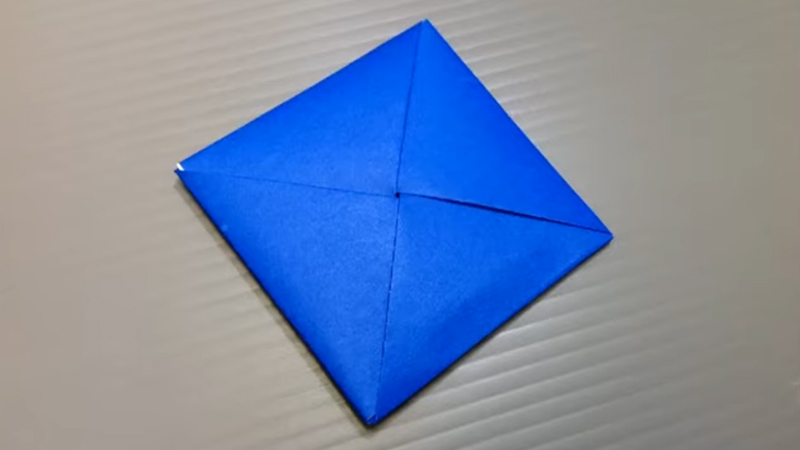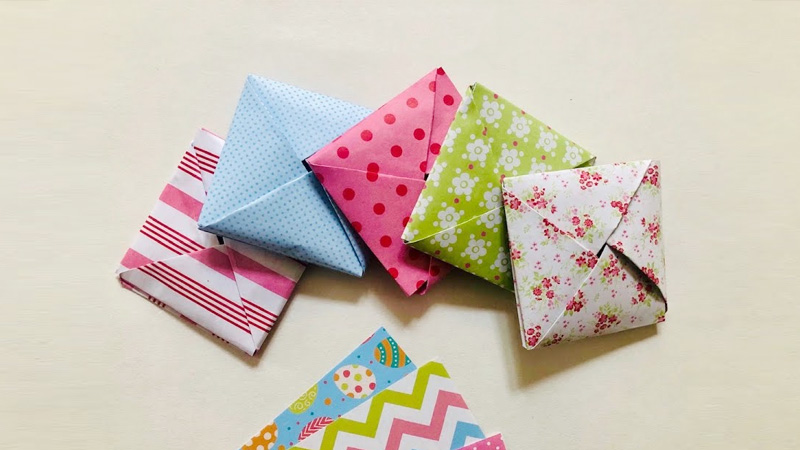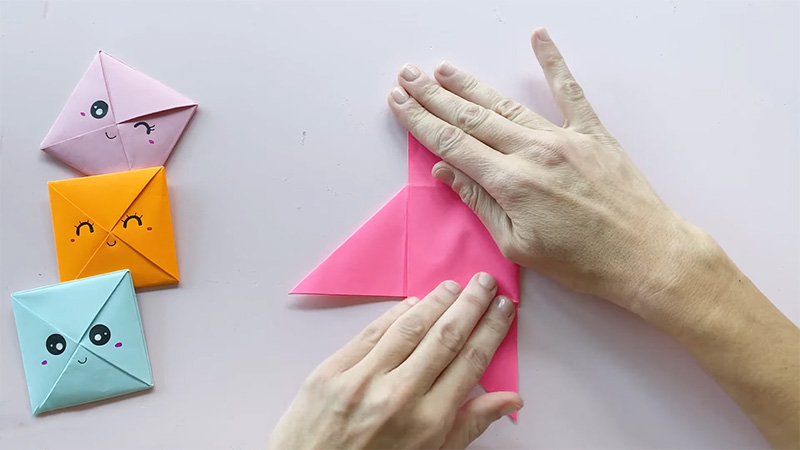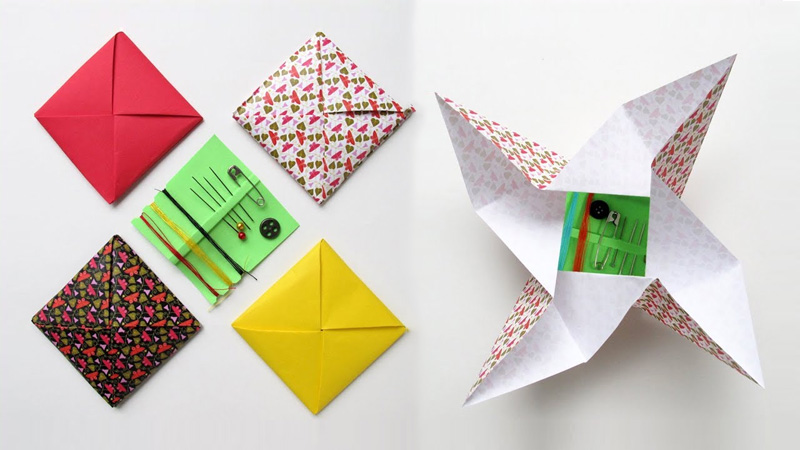Origami Menko is a captivating facet of the ancient Japanese art of paper folding, blending creativity with a traditional children’s game.
Originating in Japan, Menko showcases the enduring appeal of origami, where intricate, flat paper cards with symmetrical designs serve as both artistic expressions and playful tokens in a unique pastime.
These mesmerizing paper discs have transcended generations, captivating enthusiasts worldwide with their simplicity, beauty, and cultural significance.
In this exploration, we delve into the artistry and history of Origami Menko, uncovering the art’s roots, its transformation through time, and the diverse ways in which it continues to inspire and enchant individuals of all ages.

What Is the Definition of an Origami Menko?
Origami is the Japanese art of paper folding, where intricate and beautiful sculptures are created from a single sheet of paper.
Within this vast world of paper folding, there exists a fascinating and lesser-known subset called “Origami Menko.”
Menko, which means “doorplate” or “card,” is a traditional Japanese game that has been enjoyed for generations.
Origami Menko combines the artistic and playful aspects of origami into a unique form of paper craft.
Origami Menko Basics:
Origami Base
Just like in traditional origami, Origami Menko starts with a square sheet of paper. Common sizes range from 3×3 inches to 6×6 inches, although larger sizes can be used as well.
Folding Techniques
The key to creating Menko lies in precise folding techniques. Unlike traditional origami, where the goal is to create a 3D shape, Menko is all about creating a flat, square paper card with intricate designs on both sides.
Decorative Patterns
Menko cards are typically adorned with beautiful and symmetrical patterns. These patterns can range from simple geometric shapes to more complex designs, often inspired by traditional Japanese motifs, like cherry blossoms, cranes, or dragons.
Versatility
Origami Menko is versatile and can be adapted for various purposes. While they are primarily used as part of the Menko game, they can also serve as decorative elements, gift tags, or even framed as art.
How Menko Evolved Over Time

Menko, a traditional Japanese card-flipping game, has a rich history that has evolved over time.
Here’s a brief overview of how Menko has changed and adapted through the years:
Early Origins (Edo Period)
Menko traces its roots to Japan’s Edo period, which spanned from the 17th to the 19th centuries. During this era, children began engaging in a rudimentary version of the game.
Originally, Menko involved wooden cards, and players competed in a simple flipping game that laid the foundation for its evolution.
Introduction of Paper Cards (Meiji Period)
The transition from wooden to paper Menko cards occurred during the Meiji period, which extended from the late 19th to the early 20th centuries.
This shift made Menko more accessible and cost-effective for a wider audience. The adoption of paper cards played a significant role in the game’s increasing popularity.
Artistic Evolution (Taisho and Showa Eras)
Throughout the early 20th century, Menko cards underwent a transformation, becoming more ornate and artistic in their designs.
These cards featured intricate and visually appealing patterns, often incorporating themes from contemporary culture such as movie stars, athletes, and celebrities.
This transition elevated Menko from a mere game to a collectible item with cultural significance.
Educational Tool (Post-WWII)
In the post-World War II period, Menko cards took on a new role as educational tools. Some Menko cards featured educational content, including math problems, historical facts, and vocabulary words.
These educational Menko cards were instrumental in helping children learn while playing, expanding the game’s utility beyond entertainment.
Contemporary Adaptations (Late 20th Century and Beyond)
In modern times, Menko has continued to evolve. Some iterations of the game incorporate digital technology, introducing augmented reality elements or smartphone apps to enhance the Menko experience.
Additionally, contemporary artists have explored Menko as a canvas for unique and artistic designs, breathing new life into this traditional game.
Cultural Preservation and Revival
Despite the rise of digital entertainment, Menko remains an integral part of Japanese culture.
Efforts have been made to preserve Menko as a cherished tradition, with competitions, exhibitions, and tournaments dedicated to the game. These endeavors ensure that Menko retains its cultural significance and historical legacy.
Global Recognition
While Menko is deeply rooted in Japanese culture, it has also gained recognition beyond Japan’s borders.
Enthusiasts worldwide appreciate Menko for its artistic value and historical significance, further solidifying its status as a treasured cultural artifact with global appeal.
How to Play Menko

Playing Menko is a traditional Japanese game that involves flipping and collecting rectangular or square cards, often made of thick paper or cardboard.
Here’s how to play Menko:
What You Need
- Menko Cards
- Players
Setup
- Prepare the Menko Cards: Each player should have an equal number of Menko cards. The number of cards per player can vary, but it’s common for each player to have around 10-20 cards.
- Decide Who Goes First: Determine the starting player through a fair method like drawing straws, flipping a coin, or any other agreed-upon method.
Rules of the Game
- Create a Playing Area: Find a flat and clear surface to use as your playing area. This could be a table, the ground, or any other flat surface that provides enough room to play comfortably.
- Starting the Game: The first player (the attacker) places one of their Menko cards face up on the playing surface. This card is referred to as the “it” card.
- Defender’s Turn: The second player (the defender) takes their turn. They hold one of their Menko cards in their hand and use it as a striker to hit the “it” card, attempting to flip it over.
- Flipping the Card: The defender’s goal is to strike the “it” card accurately in the center with their Menko card. If they successfully flip the “it” card over, they win it and add it to their collection.
- Continuing the Game: If the defender successfully flips the “it” card, they take another turn and become the attacker. The previous attacker becomes the defender, and the game continues in this back-and-forth manner.
- Collecting Cards: Players continue taking turns, trying to flip over each other’s Menko cards. When a player successfully flips a card, they keep it. The game proceeds until a predetermined endpoint is reached.
Special Rules and Variations
- Numerical Values: Some Menko cards have numerical values on them. In such cases, the defender wins the card with the higher value.
- Striking Rules: Rules for how to strike the cards (e.g., the height from which you strike, the angle, or the force) can vary by region or personal preference.
- Additional Rules: Some Menko games may have extra rules, such as “freezing” the attacker or designating a “safe zone” where attackers cannot be challenged.
Winning the Game
- The game can have a set time limit, and the player with the most collected Menko cards at the end of that time is declared the winner.
- Alternatively, the game can continue until one player has won all the cards, making them the ultimate winner.
Different Types of Origami Menko Games

Origami Menko games come in various forms and have been enjoyed by generations in Japan.
Here are different types of Origami Menko games:
Flipping Menko
This is the classic and most common type of Menko game. Players take turns trying to flip their opponent’s Menko cards by throwing their own Menko cards at them. The player who successfully flips the most cards wins.
Stacking Menko
In this version, players attempt to stack their Menko cards on top of one another. The goal is to create a tall stack of Menko cards, and the player with the tallest stack at the end of the game wins.
Matching Menko
This game involves pairs of Menko cards with matching designs. Players take turns trying to match two cards with the same pattern.
When a match is made, the player keeps the pair. The player with the most pairs at the end wins.
Sumo Menko
Inspired by the sport of sumo wrestling, players attempt to push their opponent’s Menko cards out of a designated ring or playing area. The player who successfully pushes all of their opponent’s cards out of the ring wins.
Menko Battle
In this version, players engage in a head-to-head battle using their Menko cards. Each Menko card may have different point values, and players aim to knock their opponent’s cards out of the playing area while protecting their own.
Menko Trading
Instead of competitive gameplay, Menko cards are traded among players. Participants exchange cards to complete their collections or acquire rare designs. It’s a more relaxed and social form of Menko play.
Menko Challenges
Players set up various challenges or tricks using their Menko cards. For example, they may attempt to flick their Menko cards through hoops or into designated targets, adding an element of skill and fun to the game.
Menko Tournaments
In some regions, organized Menko tournaments are held, where players compete against each other in structured competitions with rules and rankings. These tournaments can range from local events to national championships.
Educational Menko
Menko can also be used as an educational tool. Teachers use them to teach subjects like math, history, and geography.
Each Menko card may have educational information or questions, and students can earn cards through correct answers.
FAQS
What are some of the coolest origami designs to try?
Some of the coolest origami creations include complex animals like dragons and elephants, intricate modular origami sculptures, and origami tessellations that create stunning geometric patterns.
Can You Sell Origami?
Yes, you can sell origami creations. Many people sell their origami art through various platforms, including craft fairs, online marketplaces, or by taking custom orders.
Are there different variations of the Menko game?
Yes, there are various regional and cultural variations of the Menko game in Japan. These variations may have different rules, card designs, or ways of playing.
Can you use different types of paper for Origami Menko?
While traditional washi paper is commonly used for Origami Menko, you can experiment with different types of paper, such as colored origami paper or specialty papers.
Can Origami Menko be used in educational settings?
Origami is often used as an educational tool to teach geometry, spatial reasoning, and patience.
Wrap Up
Origami Menko is a captivating fusion of art and play deeply rooted in Japanese culture. Its journey from a traditional children’s game to a revered art form showcases the enduring appeal of origami.
Crafting these intricately folded, symmetrical paper discs allows for artistic expression while preserving a piece of heritage.
Whether used in friendly competitions or as decorative pieces, Origami Menko embodies the elegance and versatility of origami, captivating enthusiasts worldwide.
As we explore its history, variations, paper choices, and contemporary adaptations, we discover that this art form continues to evolve, bridging generations and cultures, reminding us of the enduring beauty in the simplicity of folded paper.
Leave a Reply